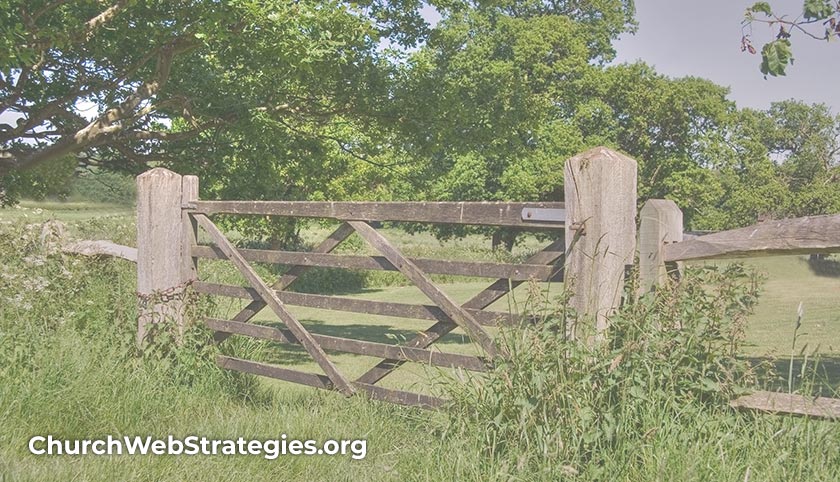Gated content is premium website content that sits behind some type of barrier. This seems counterintuitive to the Gospel message. We are to share the Good News with the world. Yet in some cases, gated content can help your church grow. The key is knowing when to use this practice. In this article, I will dig into this technique in greater detail.
Benefits of gated content
Common gates are subscribing to an email list and creating an account. The bottom line is that the content provider wants your contact information. Many eCommerce websites encourage you to create an account. That way they can notify you of upcoming sales and product updates. Your church can enjoy similar benefits. Tell interested visitors about church events, guest speakers, and new ministries. Increasing your contacts list is always a good thing. Premium gated content could grow that list and your church membership.
Drawbacks of gated content
This should be obvious. People do not want to give up personal information. If there is no perceived value to them, they will not do it. It might turn visitors away before you can begin a conversation. Also, customers are worried more than ever about privacy. A larger list means more responsibility. Storing information with a third-party email subscription manager (like MailChimp or Constant Contact) does not remove obligations. Login credentials are the only barrier between hackers and your member’s personal information.
When to use it
Two conditions must be met before your church puts content behind any kind of gate.
1. Have Customer Value
The first is content that has value to the visitor. A sermon does not qualify for this. Yet, something like an ebook might. Perhaps a digital recording of worship songs (watch your copyright laws!). Years of research might lead you to produce a video series on a theological topic. If the value is easy to see, then your visitors will respond.
2. Have a Plan for Data
The second is having a process in place to take action on the information you collect. If you are asking for email addresses, have a plan for what to do with them. Adding them to your weekly newsletter is not a very strong case. Target your message depending on what you gave them. Is it an eBook on being a new Christian? Then a series of emails helping them along that journey makes more sense. Whatever it is, have a goal and a follow-on plan.
Action Item
After reading this, do you need to remove gates on your church’s website? Maybe you think you now need some. Regardless, consider the last section of this article. Identify premium content that might convince a visitor to provide contact information. Then have a plan for how to continue the conversation. Lastly, this might inspire you to create premium content. It could be a video series, exclusive audio content, or making your pastor’s book available. Please consider the end game rather than figuring out the technical hurdles. You want to lead people into a deeper faith, not appear to be a marketing machine.
This article was inspired by a conversation with my colleague Julie Prex. We discussed gated content at the company I currently work for.
Photo courtesy of John

